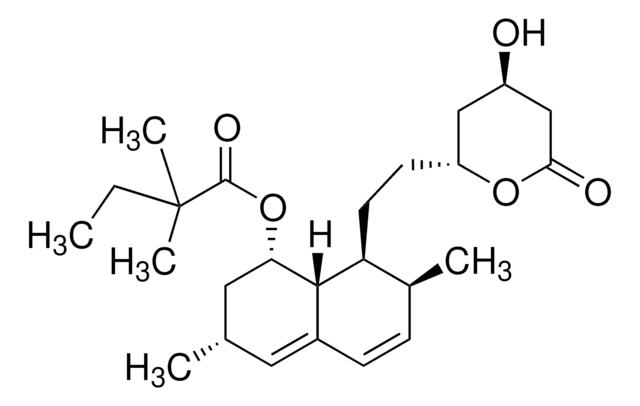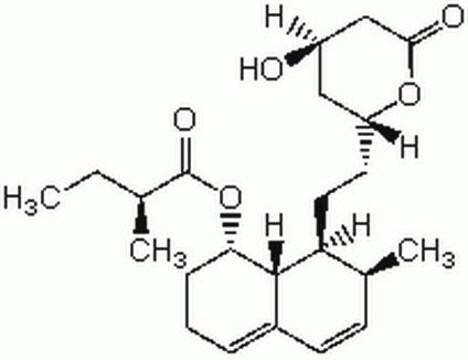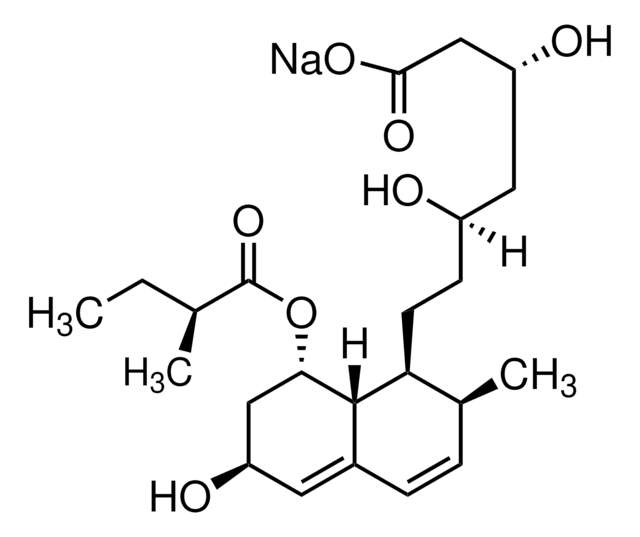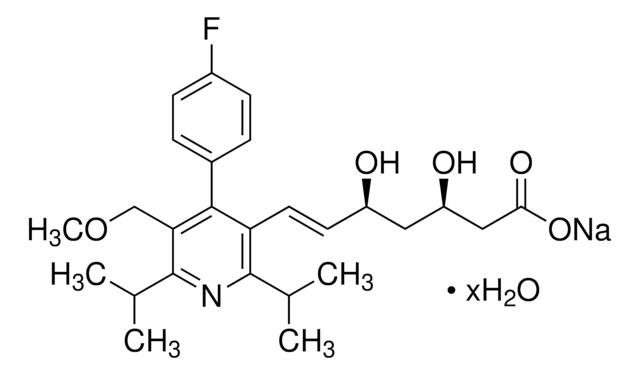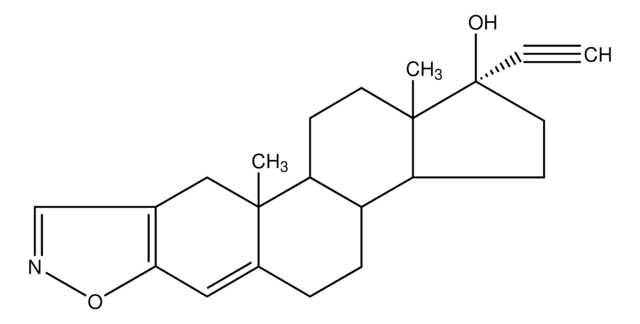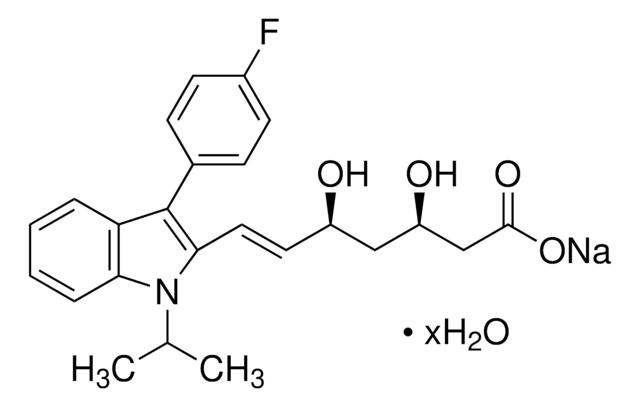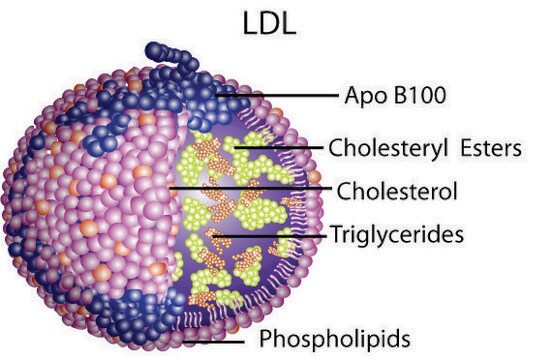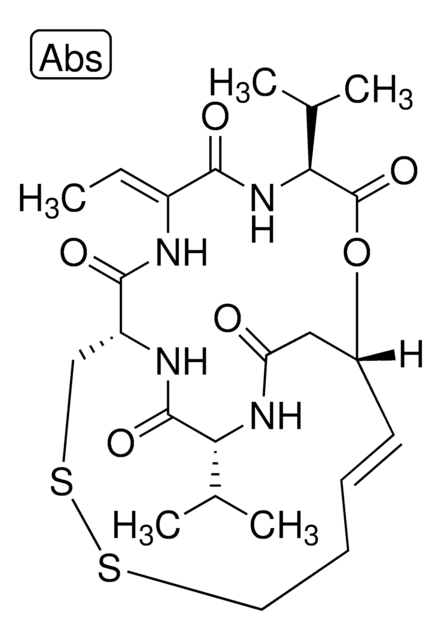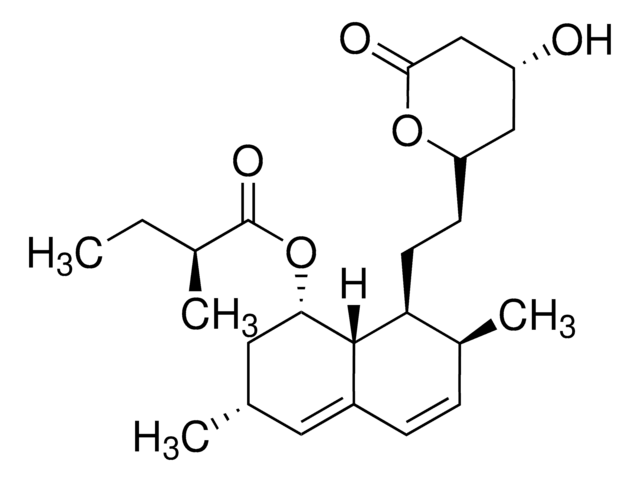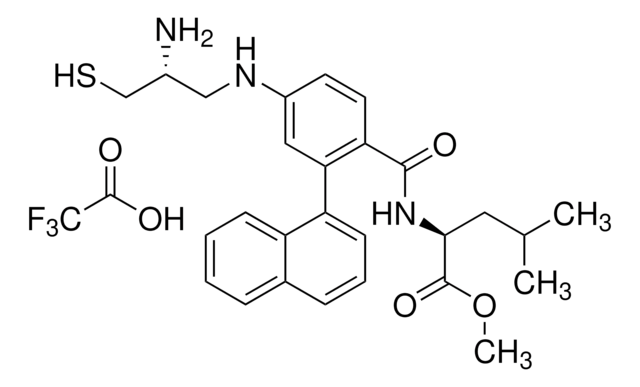Kluczowe dokumenty
M2537
Mevastatin
≥98% (HPLC), powder or crystals
Synonim(y):
Compactin, ML-236B
About This Item
Polecane produkty
Poziom jakości
Próba
≥98% (HPLC)
Postać
powder or crystals
kolor
white to light yellow
mp
151 °C
rozpuszczalność
ethanol: 25-26 mg/mL, clear, colorless
spektrum działania antybiotyku
neoplastics
Tryb działania
enzyme | inhibits
inicjator
Daiichi-Sankyo
temp. przechowywania
2-8°C
ciąg SMILES
[H][C@]12[C@H](CCC=C1C=C[C@H](C)[C@@H]2CC[C@@H]3C[C@@H](O)CC(=O)O3)OC(=O)[C@@H](C)CC
InChI
1S/C23H34O5/c1-4-14(2)23(26)28-20-7-5-6-16-9-8-15(3)19(22(16)20)11-10-18-12-17(24)13-21(25)27-18/h6,8-9,14-15,17-20,22,24H,4-5,7,10-13H2,1-3H3/t14-,15-,17+,18+,19-,20-,22-/m0/s1
Klucz InChI
AJLFOPYRIVGYMJ-INTXDZFKSA-N
informacje o genach
human ... HMGCL(3155) , HMGCR(3156)
rat ... Hmgcr(25675)
Szukasz podobnych produktów? Odwiedź Przewodnik dotyczący porównywania produktów
Opis ogólny
Zastosowanie
- to analyze its effects on chronic lymphocytic leukemia (CLL) cells by cytotoxic assay
- as a prenylation inhibitor to analyze its effects on human embryonic kidney (HEK) cells transfected with K-Ras
- as a statin agent to study its anti-cancer effect on human breast cancer cells and glioblastoma in vitro
Działania biochem./fizjol.
Cechy i korzyści
Opakowanie
Kod klasy składowania
11 - Combustible Solids
Klasa zagrożenia wodnego (WGK)
WGK 3
Temperatura zapłonu (°F)
Not applicable
Temperatura zapłonu (°C)
Not applicable
Środki ochrony indywidualnej
Eyeshields, Gloves, type N95 (US)
Certyfikaty analizy (CoA)
Poszukaj Certyfikaty analizy (CoA), wpisując numer partii/serii produktów. Numery serii i partii można znaleźć na etykiecie produktu po słowach „seria” lub „partia”.
Masz już ten produkt?
Dokumenty związane z niedawno zakupionymi produktami zostały zamieszczone w Bibliotece dokumentów.
Klienci oglądali również te produkty
Produkty
Terpenes comprise the largest and most diverse class of secondary metabolites; approximately 55,000 compounds have been identified to date.
The amount of cholesterol that is synthesized in the liver is tightly regulated by dietary cholesterol levels. LDL receptors regulate the cellular transport of lipid rich low density lipoprotein (LDL) particles.
Randomized controlled clinical studies have suggested 3-hydroxy-3-methylglutaryl coenzyme A (HMG-CoA) reductase inhibitors (statins) are effective in both primary and secondary prevention of cardiovascular disease (CVD) events.
Nasz zespół naukowców ma doświadczenie we wszystkich obszarach badań, w tym w naukach przyrodniczych, materiałoznawstwie, syntezie chemicznej, chromatografii, analityce i wielu innych dziedzinach.
Skontaktuj się z zespołem ds. pomocy technicznej